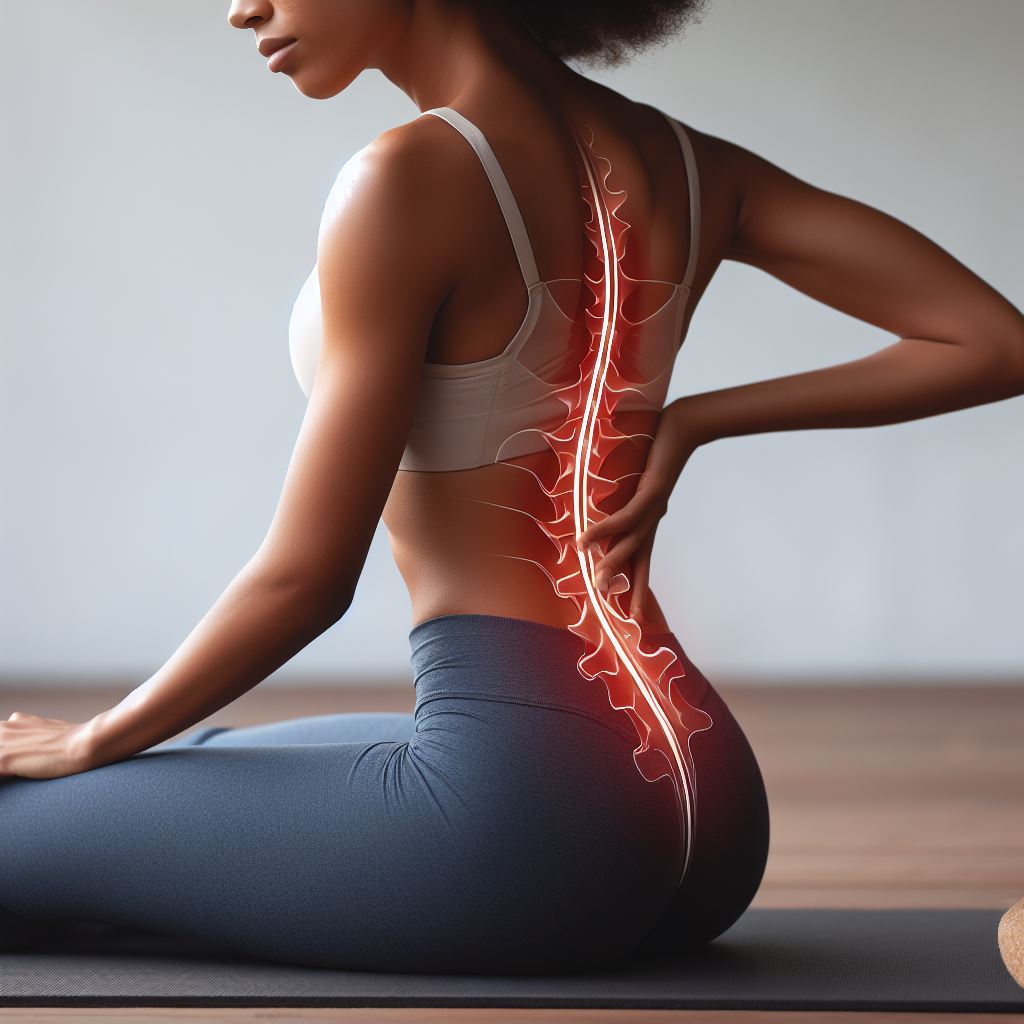Embarking on a journey to alleviate the excruciating discomfort of sciatic pain requires a deep understanding of its causes and effective treatment options. Like a winding pathway, sciatica can cause numbness, pain, and tingling that radiates down the leg, hindering daily activities.
This article delves into the underlying factors contributing to this condition, explores the benefits of personal training, massage therapy, cupping, and acupuncture, and provides valuable insights into the relief and healing of sciatic pain.
Key Takeaways
- Sciatica is caused by irritation or inflammation of the sciatic nerve and can result in numbness, pain, or tingling down the leg.
- The main causes of sciatic pain include conditions such as Piriformis syndrome and herniated lumbar intervertebral discs.
- Personal training that includes stretching, exercises, and strength training can help alleviate sciatic pain by strengthening the back, core, and gluteal muscles.
- Massage therapy, cupping, and acupuncture can all provide relief from sciatic pain by reducing irritation, increasing blood flow, and promoting muscle relaxation.
Sciatica Symptoms and Causes
The symptoms and causes of sciatica can vary depending on the underlying condition or factors that contribute to the irritation or inflammation of the sciatic nerve.
Sciatica is characterized by numbness, pain, or tingling that runs down the nerve pathways, typically starting in the buttocks and running down the back side of the leg. The pain can extend all the way to the outside of the foot.
Common causes of sciatic pain include Piriformis syndrome, where the piriformis muscle tightens and irritates the sciatic nerve, and herniated lumbar intervertebral discs that compress the nerve roots. Other factors such as pregnancy, lumbosacral spine osteoarthritis, and a dislocated hip can also lead to sciatic nerve pain.
Understanding these causes is essential for effective treatment. Prevention strategies for sciatica include maintaining good posture, practicing proper lifting techniques, and engaging in regular exercise to strengthen the back and core muscles.
Natural remedies for sciatic pain may include heat or cold therapy, gentle stretching exercises, and over-the-counter anti-inflammatory medications.
Personal Training for Sciatica Relief
Personal training offers effective relief for sciatica by incorporating targeted exercises and stretches to alleviate pain and strengthen the muscles supporting the lower back and core. This personalized approach helps individuals manage their symptoms and improve their overall physical well-being.
Personal trainers provide exercise modifications and stretching techniques specifically tailored to the individual’s condition and level of discomfort. Here are two sub-lists that highlight the key benefits of personal training for sciatica relief:
Benefits of Personal Training for Sciatica Relief:
Alleviating Pain:
- Personal trainers guide individuals through exercises and stretches that target the affected areas, reducing pain and discomfort.
- Specific movements help release tension and promote flexibility, easing pressure on the sciatic nerve.
Strengthening Muscles:
- Personal training focuses on strengthening the muscles in the lower back and core to provide better support for the spine.
- Strengthening the piriformis and gluteal muscles can further alleviate pressure and strain on the sciatic nerve.
Massage Therapy for Sciatic Pain
Massage therapy is a beneficial treatment option for relieving sciatic pain. It offers various benefits for individuals suffering from sciatica, including reducing irritation in the neural pathway and relieving pressure on the sciatic nerve. By loosening the muscle fibers surrounding the sciatic nerve, massage therapy can help alleviate discomfort and prevent chronic sciatica.
Additionally, massage therapy increases blood flow, which speeds up the healing process. Different massage techniques can be used for sciatic pain relief, such as deep tissue massage, Swedish massage, and trigger point therapy. Deep tissue massage targets the deeper layers of muscles and connective tissues, while Swedish massage focuses on relaxation and overall tension relief. Trigger point therapy involves applying pressure to specific points to release tight knots and muscle tension.
Cupping and Acupuncture for Relief
Cupping and acupuncture are alternative therapies that can provide relief for individuals suffering from sciatic pain. These therapies have been used for centuries in traditional Chinese medicine and are gaining popularity in Western medicine as well.
Here are some benefits of cupping therapy for sciatic pain:
- Increased blood flow: Cupping therapy helps to improve blood circulation in the affected area, which can reduce inflammation and promote healing.
- Muscle relaxation: Cupping therapy can help to relax the muscles surrounding the sciatic nerve, reducing tension and relieving pain.
Acupuncture techniques for relieving sciatic pain include:
- Acupuncture needles: Thin needles are inserted into specific points along the meridians of the body, stimulating the nervous system and releasing endorphins, which are natural painkillers.
- Electro-acupuncture: This technique involves attaching electrodes to the acupuncture needles, which allows for a gentle electrical current to flow through the needles, further stimulating the nerves and providing pain relief.
Both cupping and acupuncture are effective methods for relieving sciatic pain and can be used in conjunction with other treatments for optimal results.
Effective Treatment Options for Sciatic Pain
One effective treatment option for sciatic pain is through the use of physical therapy techniques. Physical therapy can help alleviate pain and improve mobility by targeting the underlying causes of sciatica.
Effective exercises such as stretching and strengthening exercises can help reduce pressure on the sciatic nerve and improve muscle imbalances. These exercises focus on strengthening the core and back muscles, providing support and stability to the lower back.
Additionally, alternative therapies such as massage therapy, cupping, and acupuncture can also be beneficial in relieving sciatic pain. Massage therapy helps to reduce muscle tension and improve blood flow, while cupping and acupuncture promote relaxation and stimulate the body’s natural healing process.
These alternative therapies can be used in conjunction with physical therapy techniques to provide comprehensive and effective treatment for sciatic pain.
Frequently Asked Questions
Can Sciatica Cause Other Symptoms Besides Numbness, Pain, and Tingling?
Yes, sciatica can cause other symptoms besides numbness, pain, and tingling. These symptoms may include weakness, difficulty walking, loss of bowel or bladder control, and muscle atrophy. Preventing sciatica from recurring involves strengthening the back and core muscles, maintaining proper posture, and avoiding activities that strain the lower back.
Are There Any Specific Exercises or Stretches That Should Be Avoided for People With Sciatic Pain?
When dealing with sciatic pain, it is important to be cautious when performing certain exercises or stretches. Avoid activities that involve excessive bending, twisting, or heavy lifting. Instead, focus on gentle stretching, low-impact exercises, and core strengthening to alleviate pain and prevent further injury.
How Long Does It Typically Take for Massage Therapy to Provide Relief for Sciatic Pain?
Massage therapy can provide relief for sciatic pain, but the duration of effectiveness varies. It typically takes several sessions to experience significant improvement. The effectiveness of massage therapy depends on the severity and underlying causes of the pain.
Are There Any Potential Side Effects or Risks Associated With Cupping and Acupuncture for Sciatic Pain Relief?
Potential risks and side effects of cupping and acupuncture for sciatic pain relief include mild bruising, skin irritation, and temporary soreness. However, when performed by a trained professional, these techniques are generally considered safe with minimal risks.
What Are Some Alternative Treatment Options for Sciatic Pain Besides Personal Training, Massage Therapy, Cupping, and Acupuncture?
Chiropractic care and physical therapy are alternative treatment options for sciatic pain. Chiropractic adjustments aim to align the spine and relieve pressure on the sciatic nerve. Physical therapy involves targeted exercises and stretches to strengthen muscles and improve flexibility, reducing pain and promoting healing.
Conclusion
In conclusion, understanding and effectively treating sciatic pain is crucial for individuals suffering from this debilitating condition.
By addressing the underlying causes, such as Piriformis syndrome or herniated lumbar intervertebral discs, and incorporating techniques such as personal training, massage therapy, cupping, and acupuncture, individuals can find relief from the distressing effects of sciatic pain.
These treatment options serve as a guiding light, helping individuals navigate the pathway to healing and recovery.


















